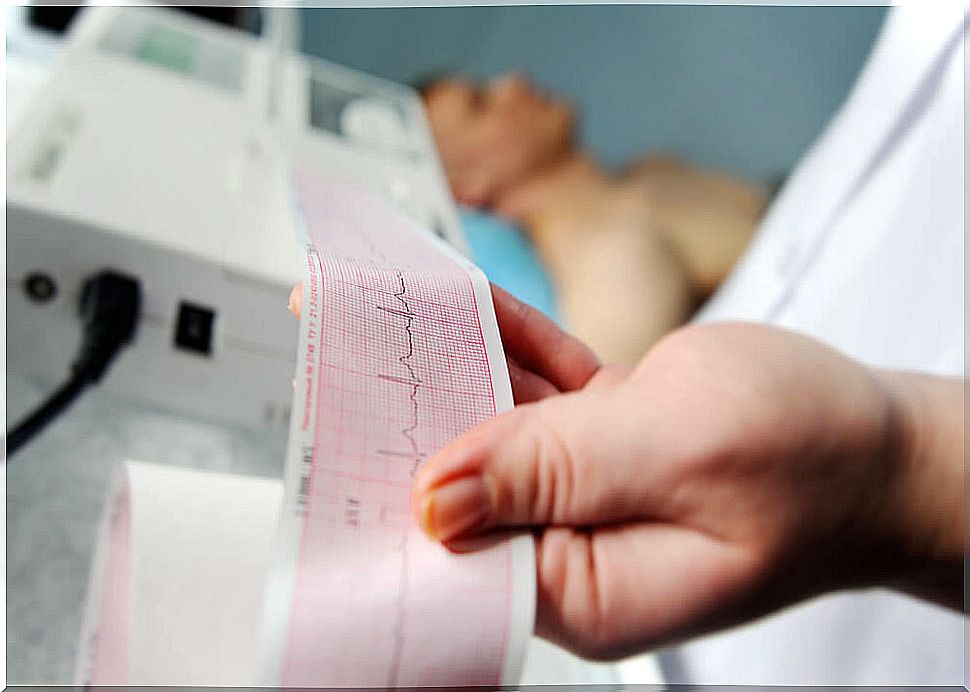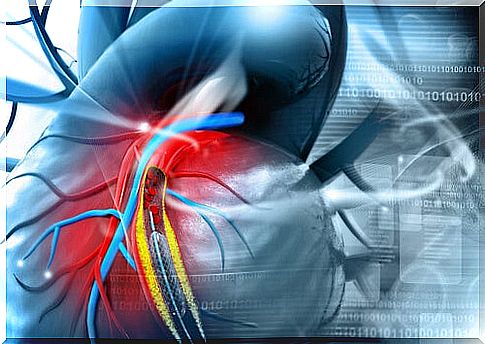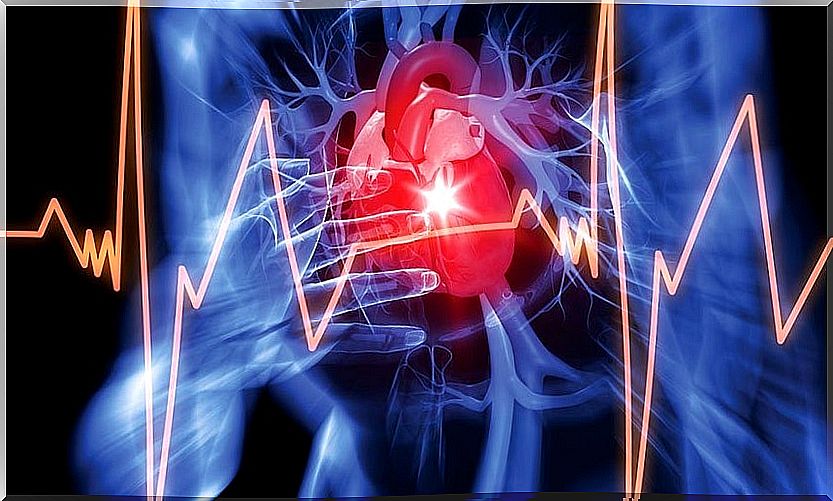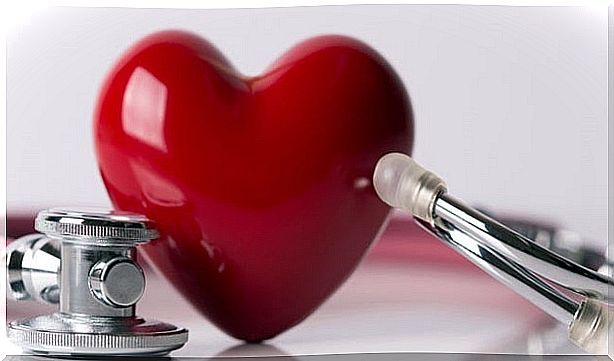Everything You Need To Know About The ECG
The electrocardiogram or ECG is a very simple procedure that takes only a few seconds and does not have any type of complications.

The ECG, or electrocardiogram, is an important supportive diagnostic procedure. It is performed when there is a suspicion that there is a cardiac pathology. Its function is to provide evidence to confirm or rethink the main diagnosis.
The performance of the ECG allows a record of the electrical activity of the heart. Electrical signals are born in the right atrium. From there they are transmitted and distributed throughout the heart. This results in the heartbeat.
The electrical impulses are captured by electrodes. These are recorded on graph paper, in the form of curves or lines. These show how the ventricles and atria contract and relax. In this way, a picture of how the patient’s heart is working can be established.
When and for what is the ECG taken

There are many health problems that require an ECG to be done. It is almost always a question of heart problems, but it is also required for other conditions. The purpose is always diagnostic.
An ECG is usually ordered in the following cases:
- If the patient has chest pain that suggests angina pectoris or a myocardial infarction.
- If cardiac arrhythmia is suspected.
- When there are suspicions of other pathologies such as pericarditis, heart failure, etc.
- If there are lung pathologies, such as pulmonary embolisms or thrombi. In these cases there is a risk that this mass will obstruct the blood vessels of the heart. Therefore, the usual thing is that the ECG is ordered.
- When a person wears a pacemaker. The electrocardiogram allows to evaluate the functioning of this.
- If there are ionic disorders in the body.
- Before performing surgery, it is necessary to evaluate cardiac function using an ECG.
- The use of the ECG is considered a standard of care during general anesthesia and is strongly recommended when providing deep sedation.
Previous measures

The ECG taking, as such, lasts between two and three minutes. However, prior to taking, electrodes should be placed on the chest, ankles, and wrists. This procedure is a bit longer. In total, the procedure can take between 10 and 15 minutes.
The EKG is an outpatient procedure. It does not require the ingestion of previous medications, nor the presence of a companion. Nor is it necessary to fast, nor does it have any contraindications.
It is best to wear clothing that is easy to remove and relax, as this is not a complicated exam. You must inform about the medications that are being taken.
How it is performed

The steps to perform an ECG are as follows:
- The patient must lie down on a stretcher, face up, and remove all metal items that they carry.
- Six electrodes are placed on the body. They are like stickers or a kind of patches. Two go on the ankles, two on the wrists, and two on the chest.
- Then, wires are connected to these electrodes and the recording begins, which lasts only a few seconds. The person must remain still and not speak during the ECG.
If a person is being treated in the emergency room, the usual thing is to do several electrocardiograms. For this reason, you must lie on the table with the electrodes on your body.
Once the exam is finished, the patient can resume normal activities without any problem. In some people the stickers or patches can cause mild skin irritation.
Results
The interpretation of an electrocardiogram must be carried out by a specialist. For this reason, it is usual for the results to be delivered one or several days after the ECG is taken.
What a doctor evaluates on an ECG are the following:
- Heart rate and rhythm.
- Location of the heart, or axis of the heart.
- Possible enlargements of the ventricles or atria.
- Signs of low blood supply to the heart or ischemia.
When circumstances require it, the results of the ECG take are interpreted immediately. There are also times when taking the exam results in immediate hospitalization.








